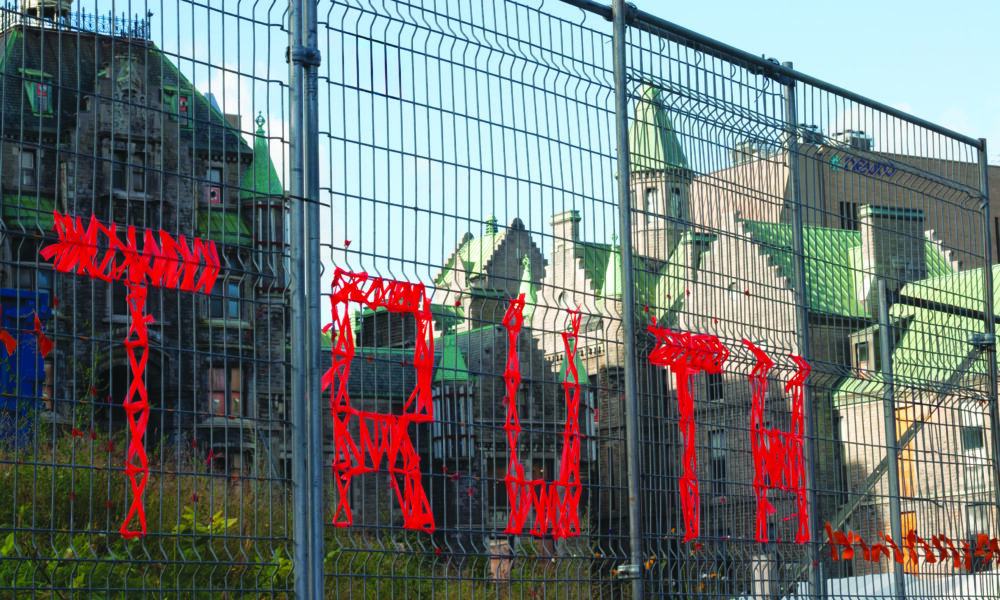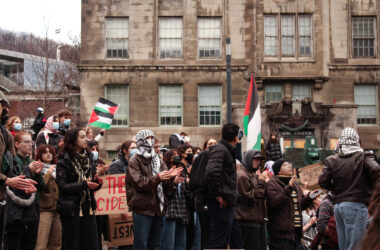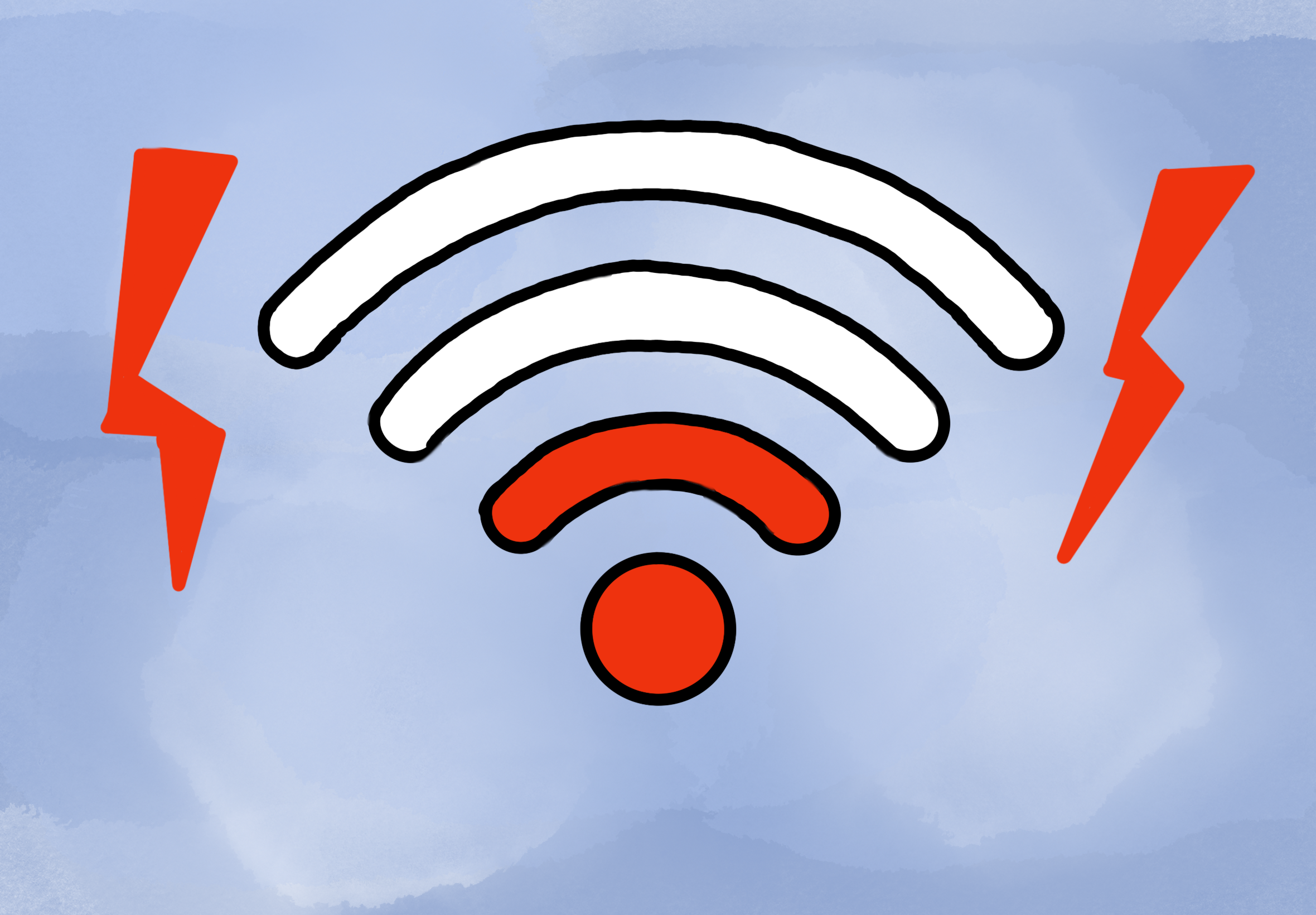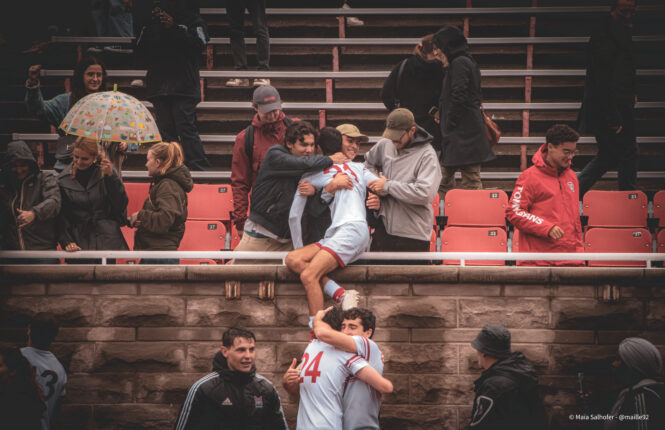Content Warning: Mentions of death
On Oct. 10, McGill’s Provost and Vice-Principal (Academic) Christopher Manfredi sent an email to all McGill students and staff providing updates on the work taking place on the former Royal Victoria Hospital (RVH) grounds, where the university plans to construct its New Vic project—a state-of-the-art research facility for sustainability systems and public policy. This comes as the latest update in the ongoing investigation into the New Vic site, where the Kanien’kehá:ka Kahnistensera (Mohawk Mothers) worry there may be unmarked graves of Indigenous children.
Manfredi’s email addressed a security concern that took place on Oct. 2, sharing that an individual placed themselves in front of active heavy machinery. McGill media relations officer Frédérique Mazerolle explained in an email to The Tribune that it was one of the Mothers who found themselves in front of heavy machinery, which posed a serious security threat to all personnel on the site.
“The incident posed a very serious safety concern for herself, the cultural monitors, and the construction workers on site. As a result, strengthened safety measures, consistent with the terms of the Settlement Agreement, were put in place.”
In an interview with The Tribune, anthropologist and associate of the Mothers Phillippe Blouin explained that leading up to the incident, archaeologists were moving above-ground piles of soil that had already been sifted for potential forensic evidence. However, they proceeded to move piles of soil that had not been sifted for evidence, which the Mothers feared could potentially damage the forensic chain of custody.
“Then, one of the Mohawk Mothers, […] she used a whistle,” Blouin said. “They have whistles there if there’s a problem on the site, to stop the machines, and to have a conversation with the archaeologists, and to see what’s going on.”
Mazerolle asserted that McGill had not provided the Mothers or anyone else with a whistle on the site.
Additionally, in a written statement to The Tribune, the Société québécoise des infrastructures (SQI)—one of the key defendants in the case—asserted that the piles of soil were being moved because the heavy machinery operating nearby made the area unsuitable for sifting such a large quantity of soil. Thus, at the request of archaeologists, the soil was moved to be sifted at a safer location.
The Mothers have not been to the site since the incident occurred, with no current plans to return.
Manfredi stated that no evidence of unmarked graves had been found on the site; he reported that the ground-penetrating radar (GPR) survey conducted last month identified any anomalies with “likely” grave-type features, but also found several “unknown” feature anomalies. He did, however, acknowledge that some new artifacts were found on the site, including bone fragments and an additional child’s shoe sole. The sole was found in Zone 11 of the site—a zone that covers paved land and thus was previously thought not to contain anomalies.
Blouin alleged that the court-appointed Indigenous cultural monitors were not told about the initial recovery of the shoe—rather, they accidentally stumbled upon it in a ditch on Sept. 28. The Mothers are skeptical about whether an archaeologist was present during its discovery, as their settlement agreement mandates.
“The Mohawk Mothers didn’t receive any proper explanation of what happened [or] why [the shoe sole] was there. Seems like it had been tossed there in the ditch in Zone 11,” Blouin said “So, we don’t know whether an archaeologist was present when it was found, and if it’s not the case that an archaeologist was present, well, that would be a breach of the agreement directly.”
Another growing concern for the Mothers is the restricted access to the physical building near the Hersey Pavilion on the New Vic Site—where Historical Human Remains Detection Dogs (HHRDD) previously detected the potential scent of human remains. Archaeologists recommended that a ten-metre radius around the area in which the HHRDD had detected an initial scent should be searched—and the building falls within that radius. Nevertheless, Blouin shared that the Mothers have not been allowed access to the building.
Farnoush Toupchinejad, U2 Science, told The Tribune that she feels that McGill communications to the staff and student body could be improved.
“It does seem like, because there is a legal battle going on, like obviously neither side wants to lose, and so, even though McGill does seem like they’re being transparent, it could also be like they’re not sharing a lot of information,” Toupchinejad said. “So even though there is recent evidence that [the New Vic site] could possibly be a grave, they’re still like, ‘Oh well, it could also be this, this, and this.’ They don’t want to kind of be hindered in their goals.”









